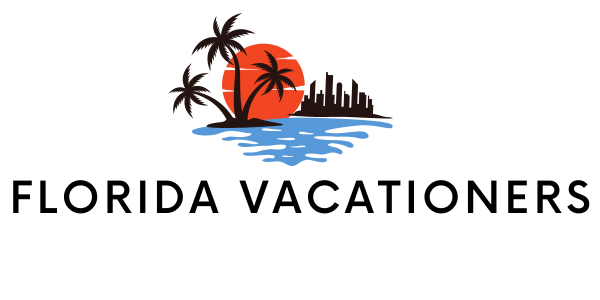Looking for the Best Places to See Alligators in Florida in the wild?
Florida is known across the world for its population of the American Alligator. These majestic reptiles are amazing to see in person but you also must take proper precautions. They are predators and known to eat small mammals grazing by the water’s edge.
While the alligator is not likely to chase you from far away, if you make the mistake of getting too close, they could surprise you from out of the water and go in for the punch and grab. Alligators then take their prey underwater to drown them before eating.
Alligators camouflage themselves so naturally in the water that finding one is both thrilling and scary. Take care to be cautious in large or small bodies of water around the state of Florida.
In this article, we’ll recommend some spots for viewing wild alligators in Florida.
14 Best Places to See Alligators in Florida (In the Wild!)
1. Everglades National Park
On the southernmost tip of Florida is a 1.5 million acre preserve called Everglades National Park. This is the largest subtropical wilderness in the United States. The park is accessible through three different areas: Miami, Everglades City and Homestead.
These entrances are not interconnected so if you want to see it all, you will need to plan to visit these three different areas separately. There is an entrance fee to the park ranging from $15-$30 depending on your vehicle.
This tropical wetland offers views of gators and crocodiles as well as birds, turtles and some of the strangest bugs you’ve ever seen. The best viewing spots are along the wooden or concrete walking paths.
These paths wind through the park enabling you to get close to the alligators while being at a safe enough distance. Everglades National Park recommends you stay 15-20 feet away from any shoreline or waterfront. Within this massive park, there are canals, ponds, freshwater lakes, channels and boat basins that are all great places to see both gators and crocs swimming through the water or basking in the sun.
If you want to cover more ground of the park than you can on foot, there are 3 airboat tours available inside the park.They are located along the Tamiami Trail. You will be sure to see many gators and crocs as well as other interesting wildlife in the tour.
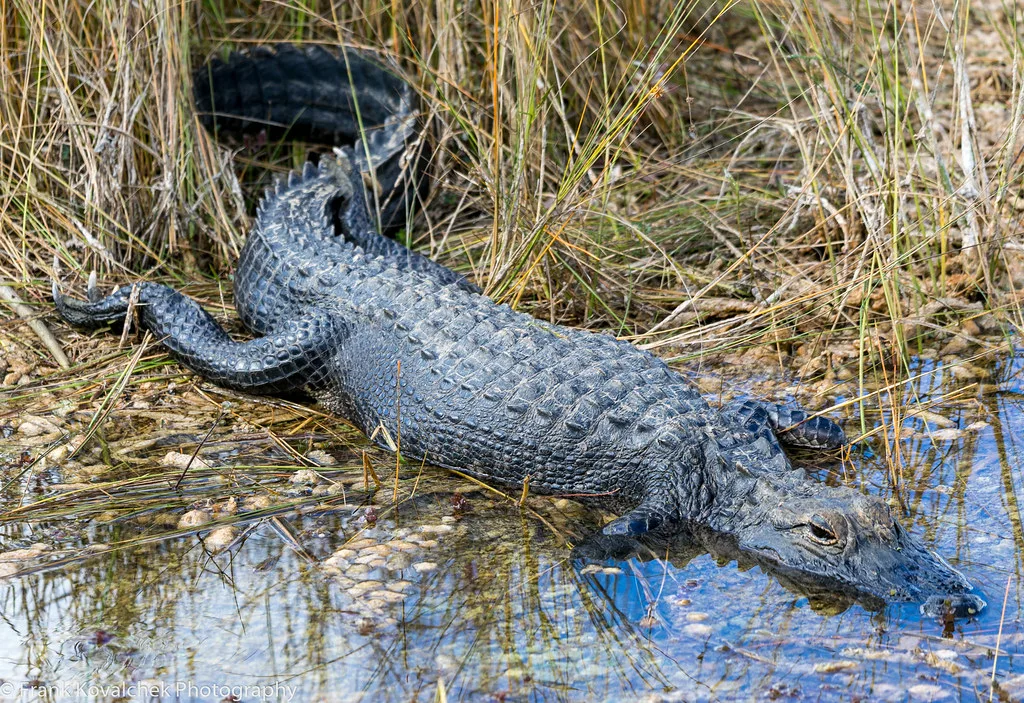
Everglades National Park/ Flickr
2. Lake Alice, Gainesville, Florida
Another great place to view alligators is at Lake Alice in Gainesville, Florida, right on the campus of the University of Florida. No wonder their mascot is the Gators! This small lake has a boardwalk viewing area where guests can see alligators as well as turtles and bats. You may need a University of Florida parking pass in order to park near the lake.
Many UF students say that the walking trails of Lake Alice are a great way to relax and connect with nature. It is known for alligator viewing as well as bat viewing.
The Bat House will be most active during sunset. Watching the bats emerge from the house at sunset is an experience not to be missed when you are in Gainesville. Lake Alice is loved by locals and is a favorite amongst Gainesville visitors.
During the day, you will see many people picnicking and enjoying the views. Park goers have also been known to bring their own hammocks and set it up between two trees to relax in the shade. As with any other viewing spot, you may not immediately see the gators, but they are there. Always be cautious to keep back from the water’s edge.
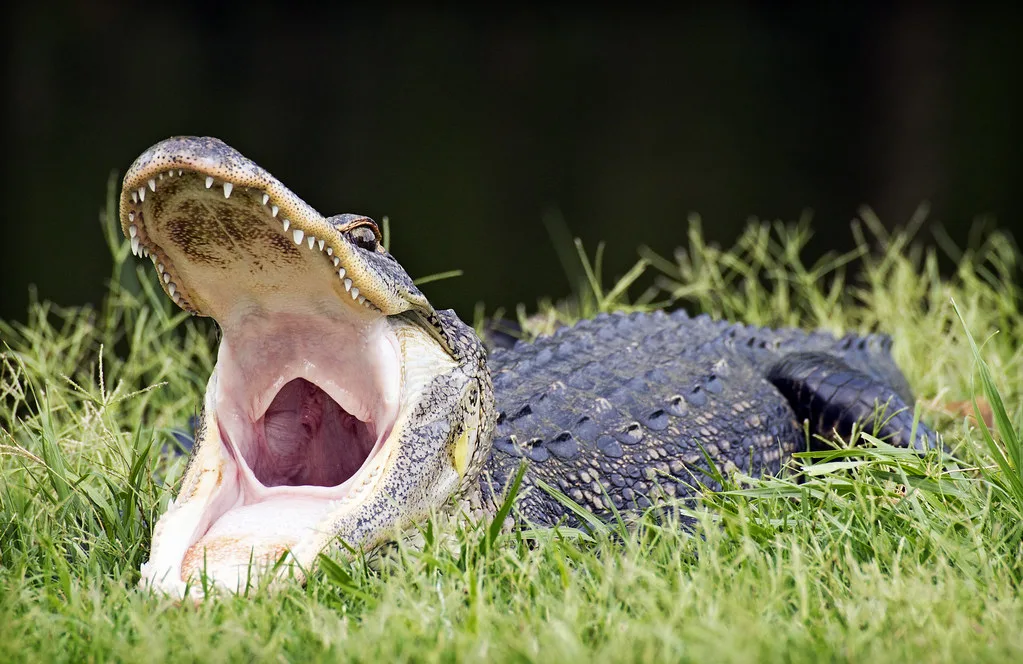
Lake Alice, Gainesville, Florida/ Flickr
3. Lake Wauburg, Gainesville, Florida
A little further south of Lake Alice, you will find Lake Wauburg in Gainesville, Florida. It’s just a short drive down Route 441 from Lake Alice to Lake Wauburg. A visit to this lake requires that at least one person in your party possesses a valid University of Florida ID and the parking is nearby and free.
There is a boardwalk walking trail that would be the best and safest way to view alligators. In addition to viewing wildlife at Lake Wauburg, there are many recreational activities you can partake in.
They offer kayaks, canoes, sailing, challenging ropes courses, a volleyball court, a pavilion with grills to cook at, mountain biking, disc golf and a general sports field for use. Many paddleboarders, kayakers and boaters say that out on the lake is the best way to view alligators at Lake Wauburg. Just be careful that you don’t hit one with your paddle!
This is a great family park to view alligators and enjoy other fun outdoor activities. There is a small beach with a lifeguard on duty. You will need to check the hours of availability for this before you go. There is no food to purchase so if you plan to stay for the day, be sure to pack your own.
4. Sweetwater Wetlands Park, Gainesville, Florida
Sweetwater Wetlands Park is a preserve with over 125 acres of wetlands and ponds. You can walk more than 3.5 miles of gravel and boardwalks with viewing stations along the trails. This picturesque park is located on Williston Road in Gainesville and is open every day from 7am until sunset. There is a $5 to park your car and $2 for bikers and pedestrians.
Sweetwater Wetlands Park was created as a way to improve the quality of water in the wetlands and Florida Aquifer. It is filled with a variety of plants and animals from birds and butterflies to alligators and Florida cracker horses. Many park goers love the natural beauty and size of the park.
It is not too big or too small. The walking trails can be done within a couple hours, but be sure to use the bathroom at the entrance as there is not one once you get out into the wilderness. It is also recommended to bring water with you as there are no spots for drinks inside the park. There is little protection from the hot Florida sun, so depending on the time of year that you visit, plan accordingly.
Alligators are very viewable in this park making it one of the destinations on our list. Visitors and alligator fans often find that they’ve seen multiple alligators on their visit. The different walking loops provide a mix of views.
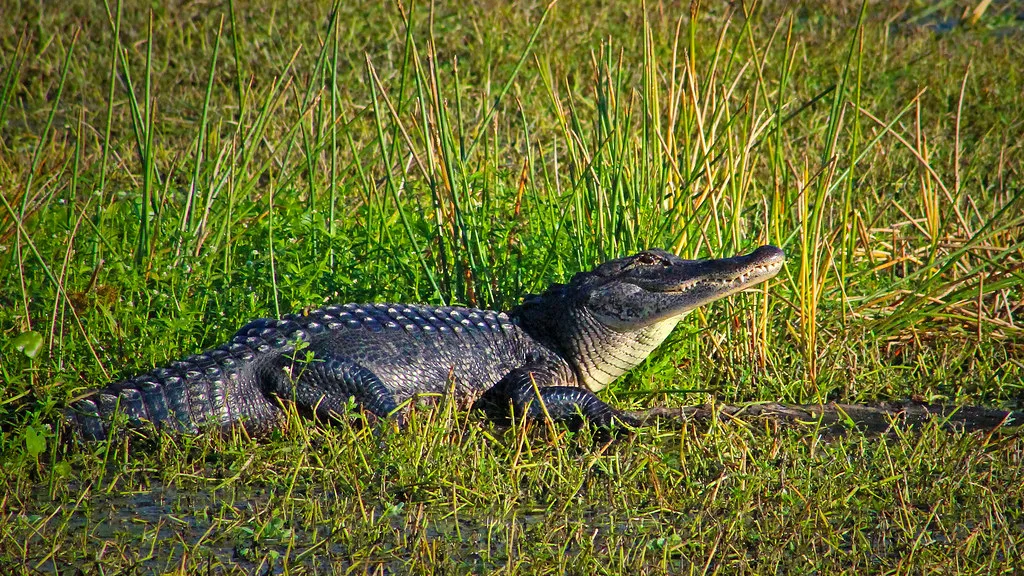
Sweetwater Wetlands Park, Gainesville, Florida/ Flickr
5. Alligator Alley (between Ft. Lauderdale and Naples)
The famed Alligator Alley is an 80 mile stretch of I-75 that cuts through the Everglades from Fort Lauderdale to Naples, FL.
It opened in 1968 and is a common way to travel from the western part of the state to get to Miami Beach.
One of the best spots to stop in Alligator Alley for viewing gators is the Broward Rest Stop. It has boat ramps and waterfront recreation areas. Look for it at Mile Markers 32 and 34 along both the north and south sides of the highway.
Often, this stretch of I-75 is described as boring and if you were to drive straight through, you may not see a single alligator on your drive. However, getting out at the viewing spots gives you a chance to stretch your legs and the opportunity to view the gators lurking nearby. It is estimated that there are hundreds of alligators within Alligator Alley, so with some patience and making the time for a stop, you will have a great chance of viewing more than one.
There is another road that is more scenic and local that runs parallel to I-75 called Loop Road. Using gps you can find the entrance and it’s perfect for a more scenic, country route where you will easily view alligators from the safety of your car. Part of the road is unpaved and during the rainy season may flood. Be sure to plan your trip accordingly.
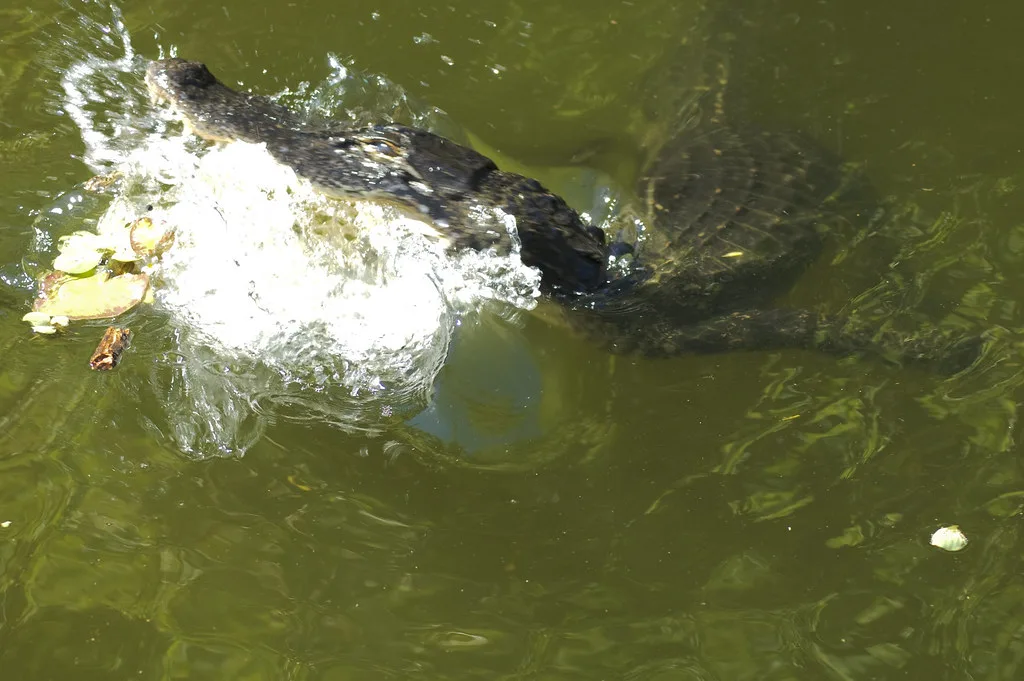
Alligator Alley (between Ft. Lauderdale and Naples)/ Flickr
6. Myakka River State Park
Between Tampa and Fort Myers sits Myakka River State Park. The Myakka River flows through 58 square miles of parkland. This 37,000 acre park has prairies, forests and wetlands. It is a very diverse land with much to do. You can kayak down the river and there are campsites as well.
Boating, canoeing and kayaking are the most popular activities here. There are also trails for hiking and mountain biking. Throughout the park, there are several places to view wildlife. If you prefer to be taken along a tour, they offer tours by boat or tram.
As you float down the river on a kayak, you will see birds like Ospreys up above, while turtles and alligators wade in the water and bask in the sun on the riverbanks.
This park is especially known for its variety of trees from pines and palms to oak trees. Another special feature of this park is the Canopy Walkway. This is the first public treetop trail in North America and allows guests to get up close with wildlife and ecosystems of the trees. The walkway is 25 feet above ground and 74 feet at its highest peak.
Myakka River State Park is located on State Road 72 in Sarasota, Florida. It is open 365 days a year from 8am until sunset. The fee to enter the park is $6.
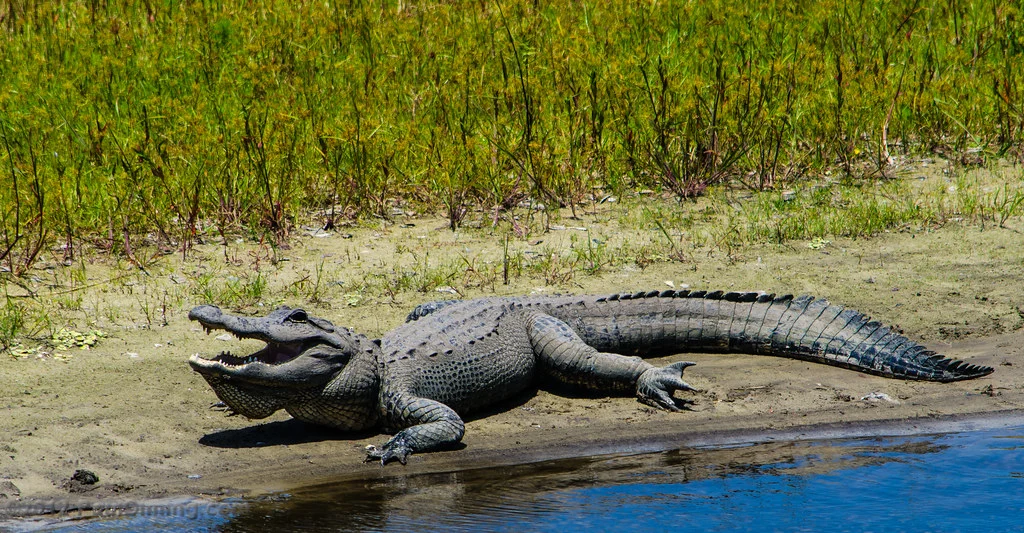
Myakka River State Park/ Flickr
7. Hillsborough River State Park
Between Lakeland and Tampa, Florida lies Hillsborough River State Park. One of the oldest state parks in Florida, it has been open for fishing and kayaking since 1938. Alligators can be seen in the water or hanging out on the banks of the river.
This park is unique to our list in that it offers Class II rapids on the Hillsborough River. The park also offers fishing, hiking, biking, kayaking and camp sites.Several different types of camping are available so that all campers can find what they are looking for at Hillsborough.They have RV and tent sites equipped with electrical hook up as well as primitive camping sites and glamping!
History lovers will also want to check out Fort Foster State Park within Hillsborough River State Park. This site is a recreation of a fort built by Col. William S. Foster and his 430 men in December 1836.
The fort was used to defend the bridge crossing at the Hillsborough River during the Second Seminole War and act as a resupply point for soldiers in the field. The park provides a living history demonstration as re-enactors demonstrate what life was like on the fort all of those years ago.
Hillsborough River State Park is located on US 301 North in Thonotosassa, Florida and is open 365 days a year from 8am until sunset. Admission to the park is $6.
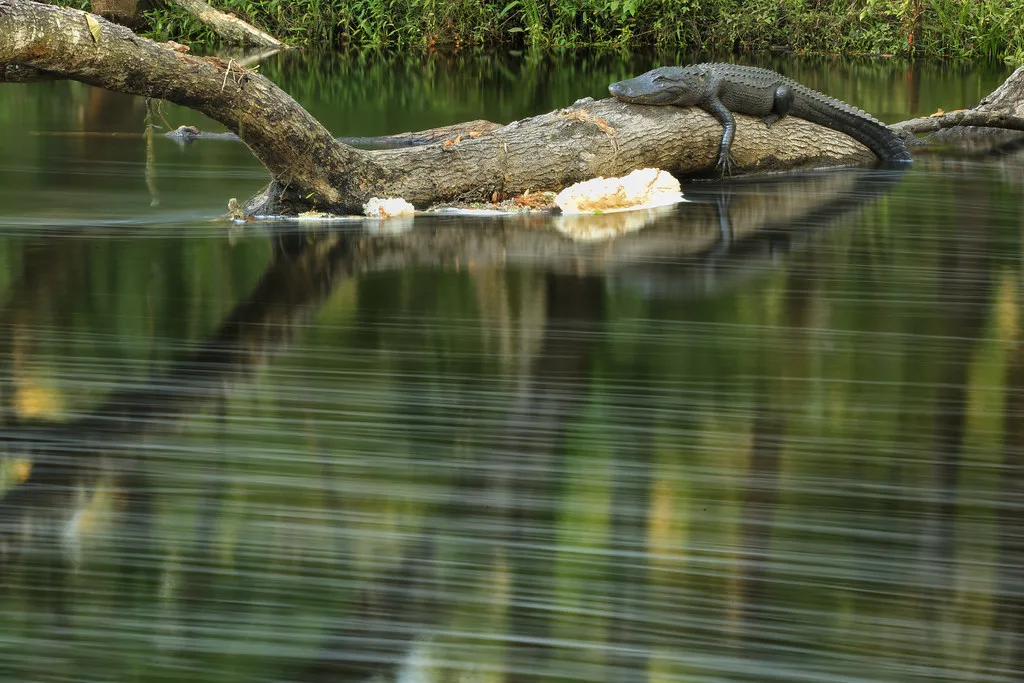
Hillsborough River State Park/ Flickr
8. Canaveral National Seashore
This beautiful and picturesque park is located on the shore of the Atlantic Ocean near Cape Canaveral, east of Orlando. Cape Canaveral is known for its NASA launching site at the Kennedy Space Center but it is also home to this gorgeous bit of wilderness. This site boasts the largest stretch of undeveloped Atlantic coastline in all of Florida.
Canaveral National Seashore is a barrier island that has dune, hammock and lagoon habitats within it. It is divided up into the areas of Apollo Beach, Turtle Mound, Castle Windy Trail, Playalinda Beach and Seminole Rest. Boating, trail hiking and fishing are among the most popular activities here as well as viewing rocket launches from the beach.
While Canaveral has alligators and many other animals to be seen, it is the sea turtles that get the most attention. Sea turtle hatchlings are protected by barriers and can be seen making their way out across the beach for their first swim in the Atlantic Ocean.
Alligators are visible at this park both on the water, in a kayak or boat, and along the waterways of the walking trails. You can get to Canaveral National Seashore by South Washington Avenue in Titusville, Florida. Admission to the park is $10.
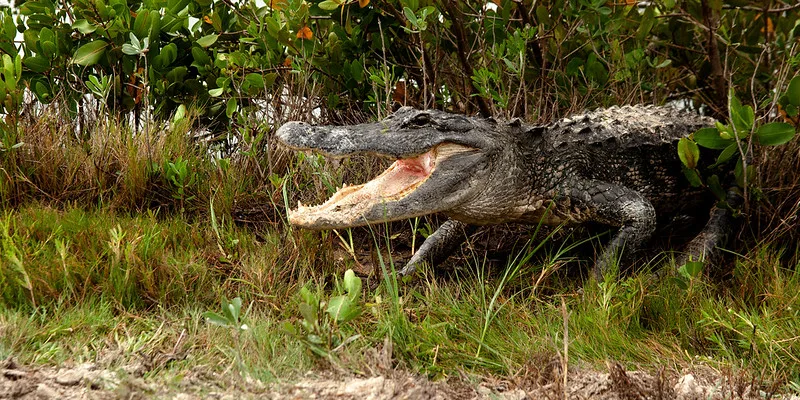
Canaveral National Seashore/ Flickr
9. Black Bear Wilderness Area, Orlando, Florida
Just North of Orlando, adjacent to Lake Monroe, sits an expansive wilderness with a hiking trail called Black Bear Wilderness Area. These 1600 acres of wetlands around the St. John’s River includes habitats of wet prairie, hydric hammock and cypress swamp.
From the parking lot, you can pick up the 7.1 mile hiking trail. The levees keep the trail dry most of the year, however this area is in the floodlands of the St. John’s River, so if you are planning to visit during the rainy season, you should check their website first to make sure it isn’t closed due to flooding. There are boardwalks along the trail to take you over the watery parts. Also, be aware that this trail is rough in spots and you will need proper hiking shoes, water and bug spray.
As the name suggests, you may see a Florida Black Bear on this property. The area is also home to River Otters, White-Tailed Deer and, of course, the American Alligator. This trail is known as one of the best and most scenic in Central Florida for viewing wildlife.
You can enter the BBWA on Michigan Avenue in Sanford, Florida. The park is open from dawn to dusk. They also offer campsites by permit only.
10. Lake Jesup
Keeping in the Orlando area, our next spot on this list is the expansive Lake Jesup. This 16,000 acre lake is part of the middle basin of the St. John’s River. It is named after Brigadier General Thomas Jesup who was a military officer in the Second Seminole War.
Lake Jesup’s natural beauty has been protected over the years which allows for Florida’s natural wildlife to flourish. There is a bridge that runs through the lake and is one of the longest freestanding bridges in Florida. Drivers on the bridge often see Bald Eagles and Osprey perched on the light posts.
Lake Jesup is part of the folklore of the area due to the story that when Disney was building in Orlando, they could not kill alligators so instead transplanted them to Lake Jesup. This story is just speculation but it could account for how there is such a dense population of gators in and around the lake.
Airboat tours are available at the lake and may be the best way to take in all of Lake Jesup’s natural beauty while seeing as many alligators as you can. There are also boat launches if you want to bring your own boat and many picnic spots along the lake’s edge as well as hiking and biking trails.
11. John’s River
The St. John’s River is the longest river in Florida and is known for its fishing and wildlife viewing. This lazy, or slow-flowing, river flows north and winds through 310 miles and 12 different counties. The St. John’s watershed covers 9,000 square miles and includes a population of over 5 million people.
This historic river was once endangered due to being altered to make way for developing agricultural and residential centers. In 2008, the St. John’s River was number 6 on the list of Most Endangered Rivers in America. Restoration efforts have been in place since then and the wildlife of the area has made major improvements.
The river flows through several lakes and is separated into three major basins. Its widest point is 3 miles across. Viewing the river by boat is the most recommended method of transportation and the best way to partake in the renowned fishing and beautiful scenery.
When boating on the St. John’s River or one of its lakes and waterways, please keep in mind river-friendly boating practices. This includes keeping your trash and throwing it away responsibly, using non-toxic paints and chemicals, keeping your engine well-tuned to prevent leaking into the water and staying out of the grasses to keep the propellers and wakes from destroying the vegetation.
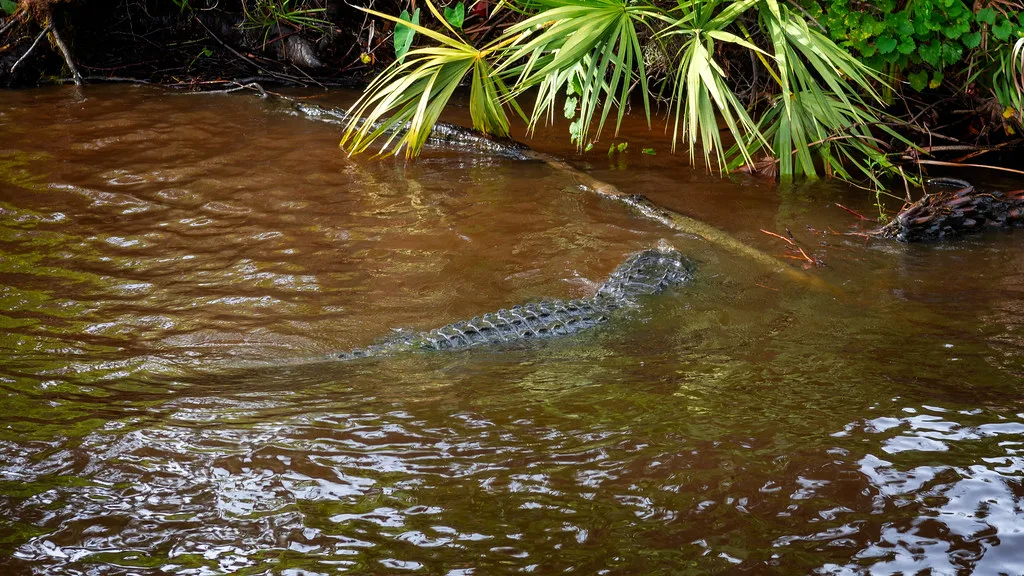
John’s River/ Flickr
12. Merritt Island National Wildlife Refuge
East of Orlando, in Titusville, Florida you can find the Merritt Island Wildlife Refuge. In 1962, when NASA acquired the lands that would become the Kennedy Space Center, plans were made to protect the pristine lands around it.
The next year, the Merritt Island National Wildlife Refuge, along with the Canaveral National Seashore mentioned earlier, were signed into agreement to be maintained by the US Fish and Wildlife Service. The original purpose of establishing the Merritt Island refuge was to protect migratory birds and endangered wildlife of the area.
The refuge exists on the Atlantic Flyway and serves as a stop over for migratory birds. In total, 358 species of birds have been identified on the refuge as well as 140 species of fish and 15 threatened or endangered species. It is classified as wetlands and a great place for alligator viewing as well.
Activities available at the refuge include hunting fowl, hiking, non-motorized boating, fishing, photography and general wildlife watching. Bird watching fans be sure to pack those binoculars to see all that this sanctuary has to offer.
The Merritt Island National Wildlife Refuge is located on Scrub Jay Way in Titusville, Florida and is open Tuesday through Saturday from 8am to 4pm.
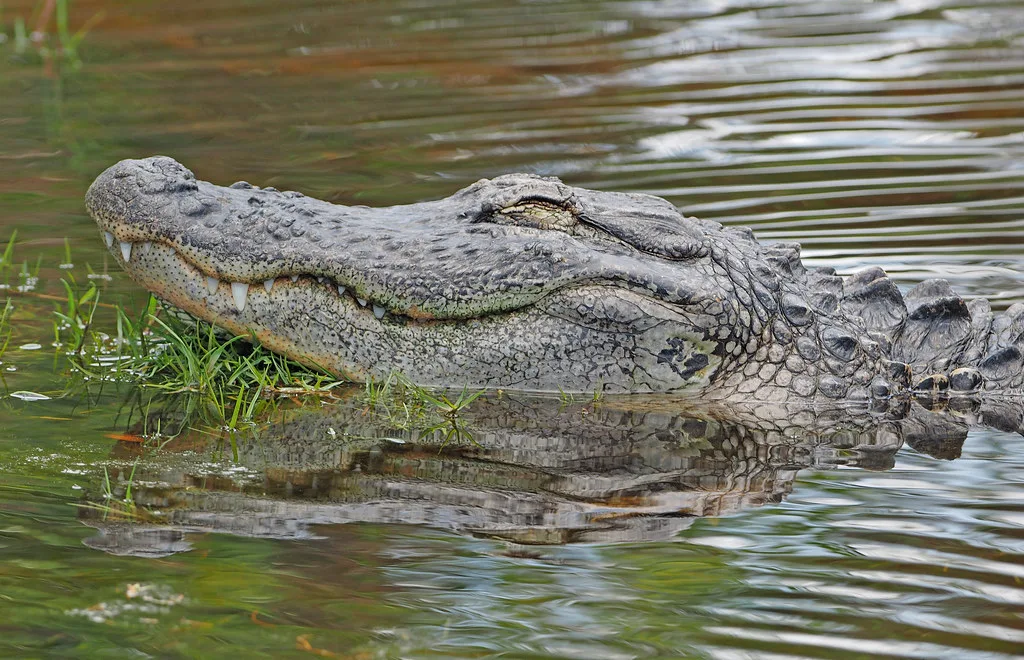
Merritt Island National Wildlife Refuge/ Flickr
13. Ocala National Forest
If you journey halfway between Orlando and Gainesville, you will find Ocala National Forest. This 600 square mile forest is known for its dense and serene environment as well as deep blue springs for swimming, hiking trails and camping.
Juniper Springs and Alexander Springs are two popular destinations within the forest. Juniper has swimming suitable for children while Alexander has bathrooms nearby. There are walking trails at both sites but Alexander Springs is known for better alligator viewing. The hikes at Juniper Springs may be better suited for younger children as they are less challenging and have less alligators.
Camping is another popular activity at Ocala. There are RV and tent camping sites that come with a small fee. However, if you are looking for a more rustic camping experience, you can do primitive camping and camp anywhere within the forest you choose for free. Off-road driving is another popular activity in the forest.
The streams throughout the forest are great for canoeing and kayaking and offer a great way to see and interact with wildlife. This along with personal boating is a great way to see the most alligators on your visit. The park is free to enter and is generally open from 8am to 6pm daily.
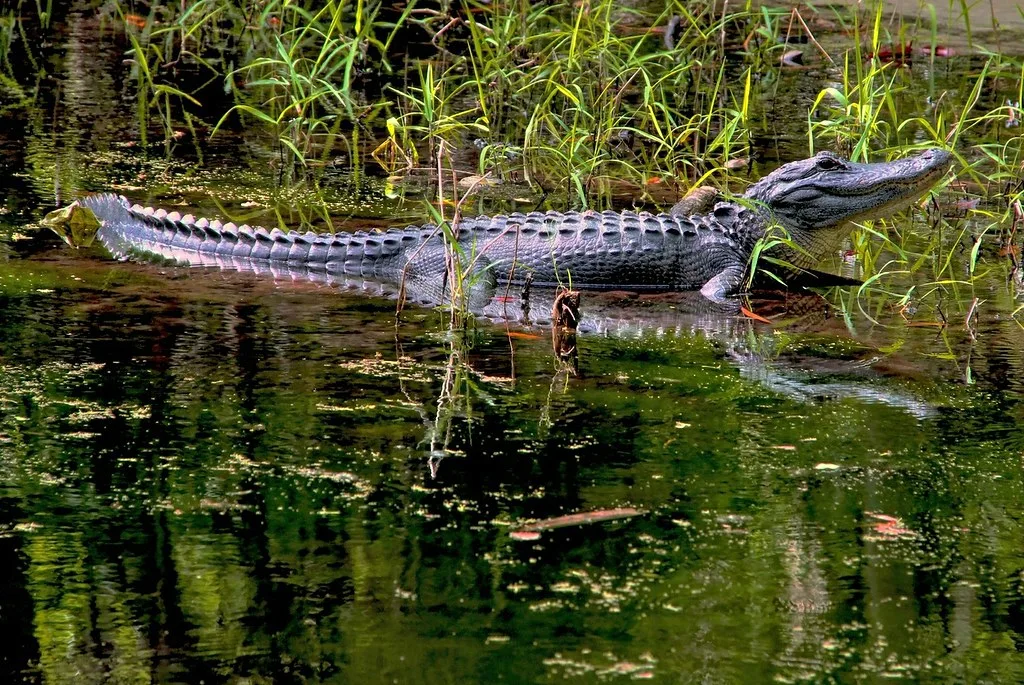
Ocala National Forest/ Flickr
14. Lake Okeechobee
Swimmers beware, Lake Okeechobee is chock full of gators! This huge freshwater lake covers 750 square miles and is sometimes referred to as Florida’s inland sea. It is the second largest lake within the United States borders. Lake Okeechobee is connected to waterways on either side that make up the Okeechobee Waterway, a 152 mile boat passageway in the middle of the state.
The Big O, as it is affectionately called, is known for its fishing and its abundant alligator population. The lake offers fishermen the chance to catch a largemouth bass, speckled perch, Okeechobee catfish or black crappies. The best place to pick up a fishing guide or tour is on the southern part of the lake at the town of Clewiston. The lake is also visited for hunting waterfowl or wildlife photography.
Aside from fishing and gator viewing, there are over 100 miles of trails surrounding Lake Okeechobee. These trails are also a great and easy way to view gators along the waterway. The best place to catch the trail is on the north end of the lake in the town of Okeechobee. There are also camping sites nearby and you can find airboat and pontoon tours available as well.
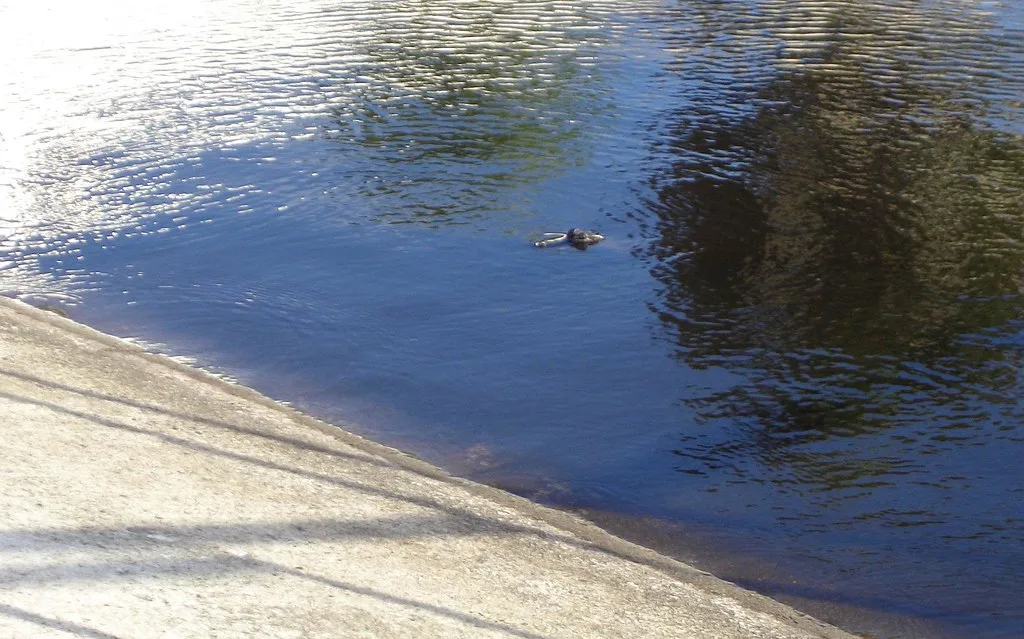
Lake Okeechobee/ Flickr
